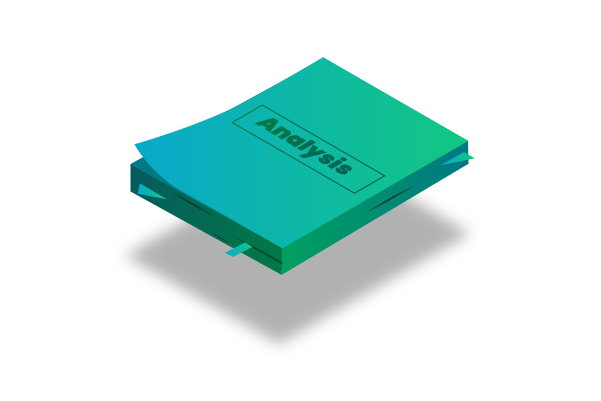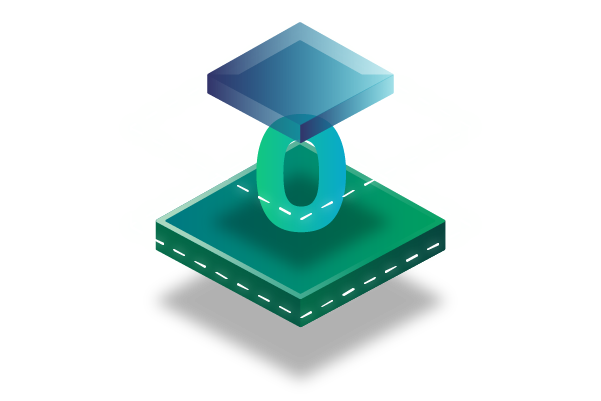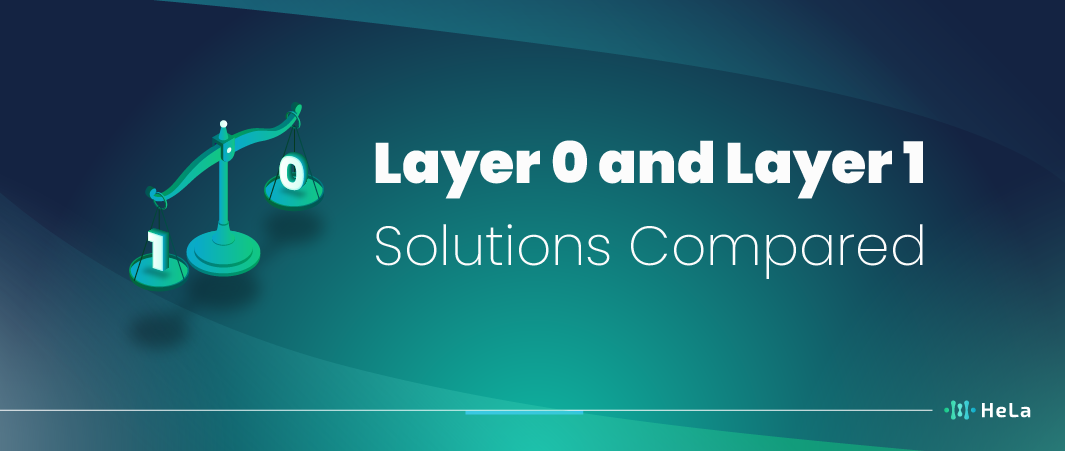In the ever-evolving world of blockchain technology, it’s crucial to grasp the distinctions between two key components: “Layer 1” and “Layer 0.” These terms are central to the journey toward decentralization and cryptography. Layer 1 is like the foundation of a blockchain, where the actual transactions occur. It’s the layer where cryptocurrencies like Bitcoin and Ethereum function, handling the nitty-gritty of digital transactions and smart contracts.
On the other hand, Layer 0 is the glue that holds the decentralized world together. It encompasses the protocols and standards that make blockchains work, focusing on governance, consensus mechanisms, and network security. In essence, Layer 1 vs Layer 0 represents the building blocks and the organizational framework that collectively shape the decentralized future we’re heading towards. Understanding this interplay is key for both newcomers and enthusiasts eager to navigate the exciting world of blockchain technology.
What is Layer 0 and Layer 1 in Blockchain?

Layer 1, often compared to “Layer 0,” serves as the foundation for blockchain systems like Bitcoin and Ethereum. It’s like the bedrock of the whole operation, where the main rules and ways of making sure everyone agrees on transactions happen. Think of it as the base layer where all the important stuff like handling transactions and smart contracts begins. However, as more people use these systems, they start to get slow because they can’t handle the increased demand. So, that’s when we start thinking about “Layer Zero” and other solutions to help these blockchains work better and faster.
Layer 1 vs. Layer 0 is a bit like comparing the base layer of a cake to the layer just below it. The base layer (Layer 1) is crucial for holding everything up, but it can’t do all the fancy stuff on its own. That’s where Layer Zero comes in, helping to make things smoother and faster so that everyone can have their slice of the blockchain pie without waiting too long. So, these layers work together, with Layer Zero giving a boost to Layer 1, ensuring that blockchain systems can grow and serve more people without slowing down.
Also Read: Top 15 Layer 2 (L2) Crypto List to Consider in 2023
Layer Zero is a fundamental but often overlooked component of blockchain technology. While Layer 1 usually gets the spotlight for handling transactions, Layer Zero plays a crucial role as the backbone supporting Layer 1 protocols. It’s like the sturdy roots of a tree, providing the essential groundwork for everything above it. Specifically, Layer Zero deals with vital aspects like peer-to-peer communication, establishing identities, and building the basic networking layer that enables nodes to connect and communicate effectively.
In a nutshell, when it comes to blockchain, it’s essential to understand the balance between layer 1 vs layer zero. Layer 1 handles transactions and data, but it relies heavily on Layer Zero for its infrastructure and connectivity. Layer Zero can be thought of as the unseen but vital foundation that ensures the entire blockchain system stands strong and functions smoothly, much like the roots that nourish and stabilize a tree, making it an indispensable part of the blockchain ecosystem.
The Comparative Analysis: Layer 1 vs Layer 0

At first glance, distinguishing Layer 1 vs Layer Zero might seem inconsequential, but understanding their interplay is vital for grasping the blockchain’s architecture.
Functionality
Layer 1 is like the action-packed hub where all the transactions happen, smart contracts get carried out, and everyone agrees on what’s what. On the flip side, Layer Zero is like behind-the-scenes wizardry that ensures all the computers (or nodes) can chat with each other smoothly. So, you could say it’s like Layer 1 vs Layer Zero, where one does the action and the other makes sure everything runs smoothly in the background.
Scalability
When it comes to addressing scalability challenges in blockchain technology, there are two main approaches: layer 1 vs layer zero. Layer 1 solutions, such as sharding or off-chain transactions, aim to directly enhance the capacity of the blockchain itself. On the other hand, layer zero is all about building a strong and reliable foundation for the entire blockchain system, ensuring it can effectively support and integrate these scaling solutions. In simpler terms, while layer 1 works on expanding the blockchain’s capabilities, layer zero focuses on making sure the entire infrastructure is ready to handle these improvements seamlessly.
Evolution
In the world of networking, we see a constant evolution happening in layer 1 vs layer zero protocols. Layer 1, which deals with the actual physical infrastructure of networks, keeps adapting and changing to meet the increasing demands of our digital world. On the other hand, layer zero remains pretty consistent, with its primary focus on maintaining stability and keeping the network decentralized and secure. This balance between the two layers is crucial to ensure that our interconnected world functions smoothly and securely.
The Importance of Understanding Both Layers

When delving into the world of blockchain technology, understanding both Layer 1 and Layer Zero is key. Layer 1, often considered the hub of blockchain activity, is where all the exciting stuff happens. This is where you’ll find game-changing developments like Ethereum 2.0’s shift to proof-of-stake and the emergence of rollups, which often steal the spotlight. However, what’s equally, if not more, important is Layer Zero. Layer Zero is the backbone that ensures everything in Layer 1 runs smoothly. Without a robust Layer Zero, implementing and sustaining these groundbreaking advancements in Layer 1 would be quite a challenge. So, when exploring the realm of blockchain, it’s crucial to recognize the symbiotic relationship between these two layers for a comprehensive grasp of blockchain’s potential and the obstacles it faces.
Also Read: What Is Layer 2? A Deeper Look into its Significance
Let’s break down the significance of “layer 1 vs layer zero.” Layer 1 represents the action-packed arena of blockchain, where transactions and innovations occur. It’s where Ethereum 2.0’s transition and other exciting developments unfold. On the other hand, Layer Zero serves as the underlying support system, making sure all these actions happen seamlessly. Think of Layer 1 as the stage and Layer Zero as the sturdy foundation that keeps the show running smoothly. Understanding this interdependence between the two layers provides a holistic view of the blockchain’s capabilities and the challenges it encounters on its path to evolution.
Conclusion
In the rapidly evolving world of blockchain, the terminologies and concepts can sometimes seem overwhelming. However, as with any subject, breaking it down into digestible pieces, like understanding the different layers, can make it more approachable. The distinction between Layer 1 and Layer Zero isn’t just academic; it’s at the heart of many debates about the future scalability, security, and decentralization of blockchains.
Understanding these layers goes beyond mere technicality; it’s about visualizing the future of decentralized networks. As blockchain technology continues to push the boundaries, ensuring a solid grasp of its foundational elements, like Layer 1 vs Layer 0, will be invaluable for anyone, be it a developer, investor, or a mere enthusiast, looking to be a part of this transformative journey.

Joshua Soriano
I am a writer specializing in decentralized systems, digital assets, and Web3 innovation. I develop research-driven explainers, case studies, and thought leadership that connect blockchain infrastructure, smart contract design, and tokenization models to real-world outcomes.
My work focuses on translating complex technical concepts into clear, actionable narratives for builders, businesses, and investors, highlighting transparency, security, and operational efficiency. Each piece blends primary-source research, protocol documentation, and practitioner insights to surface what matters for adoption and risk reduction, helping teams make informed decisions with precise, accessible content.

